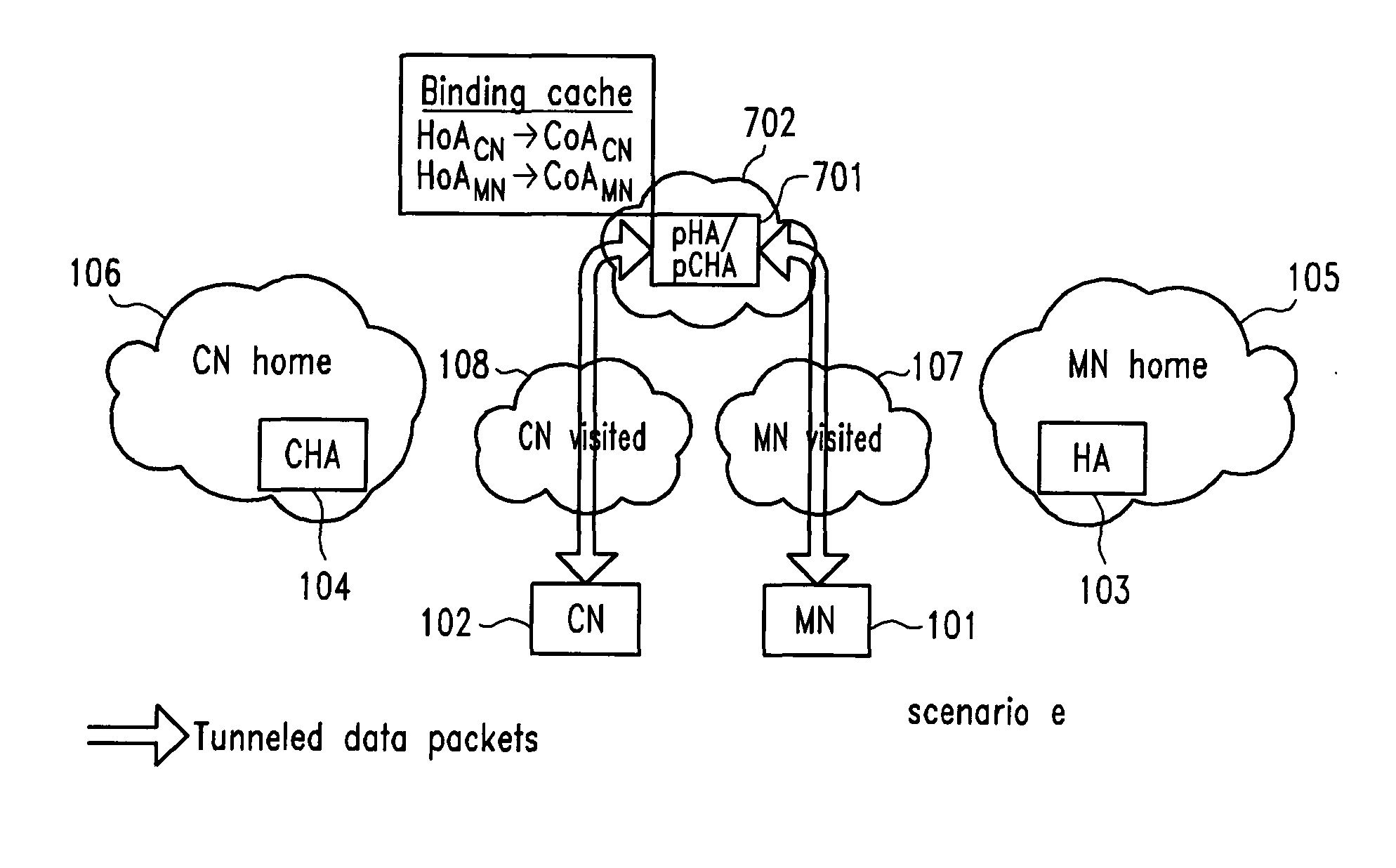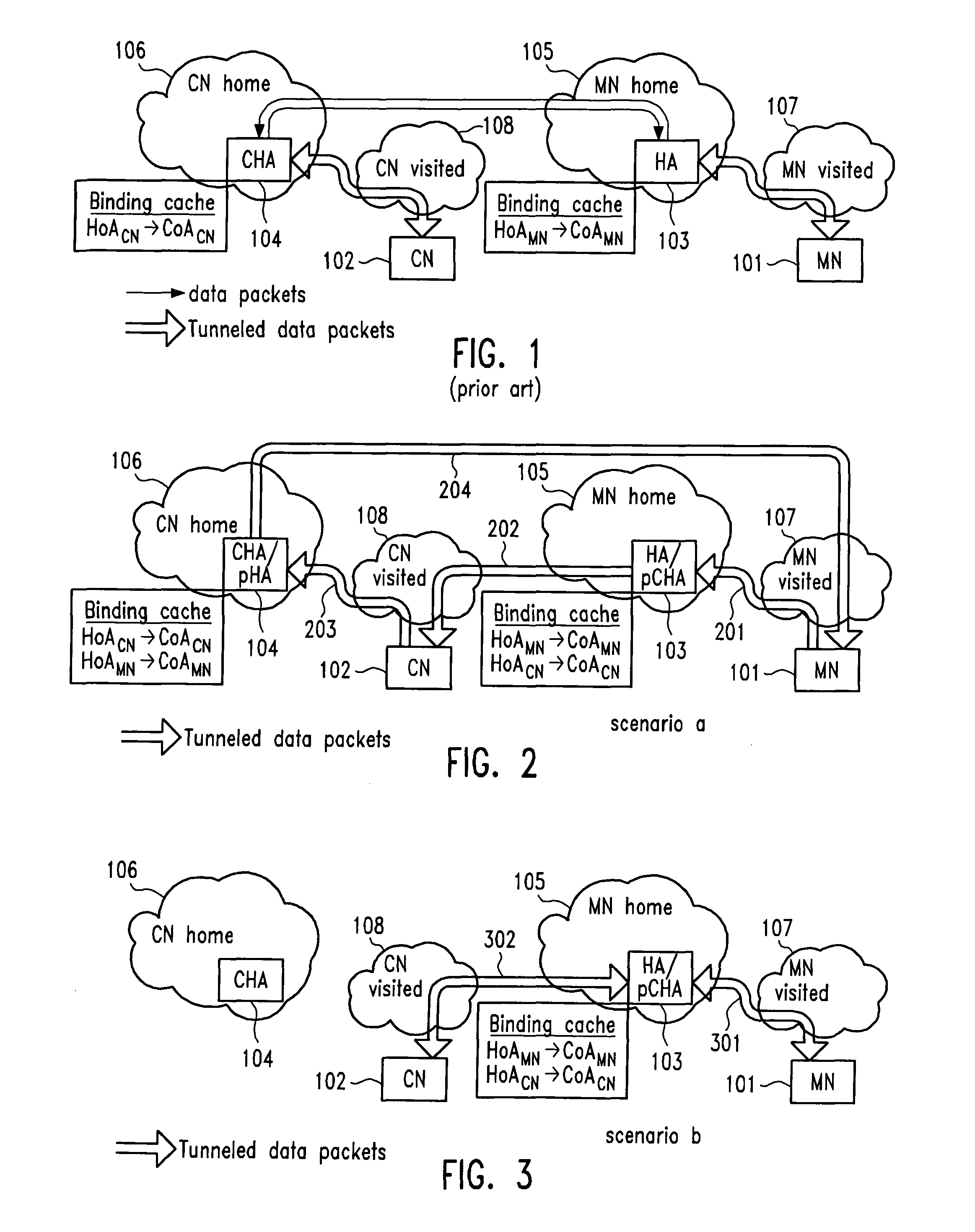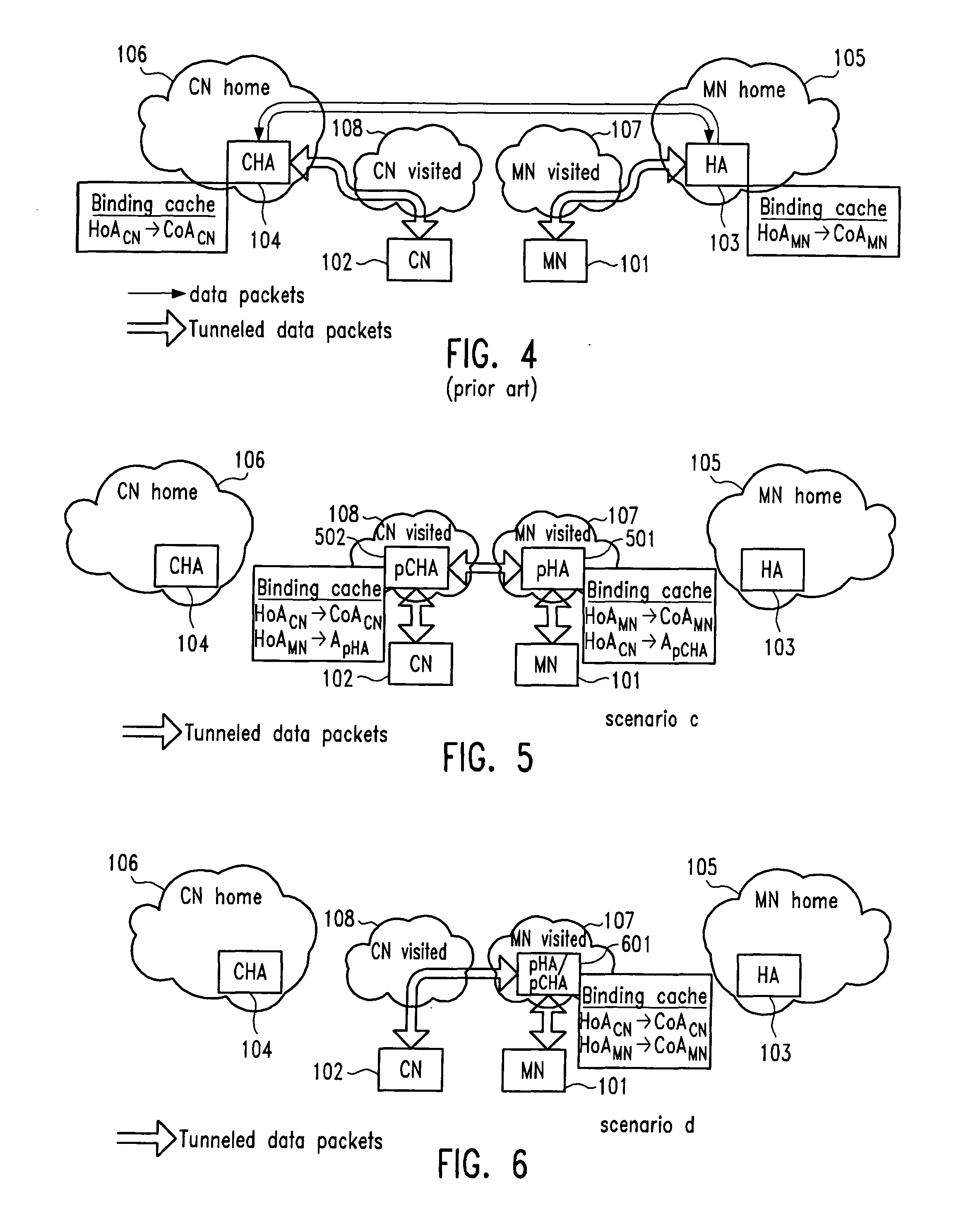Optimized Reverse Tunnelling for Packet Switched Mobile Communication Systems
a reverse tunneling and mobile communication technology, applied in the field of mobile communication systems, can solve the problems of inefficient routing, high packet delay, and inability to connect to one of the nodes, and achieve the effect of optimizing the routing of data packets, avoiding undue implementation effort, and relatively modest requirements for home agents
- Summary
- Abstract
- Description
- Claims
- Application Information
AI Technical Summary
Benefits of technology
Problems solved by technology
Method used
Image
Examples
Embodiment Construction
[0040]The illustrative embodiments of the present invention will be described with reference to the figure drawings, wherein like elements and structures are indicated by like reference numbers.
[0041]Optimized Reverse Tunnelling (ORT) first requires some initial signalling between MN or MN's HA and CN or CN's HA to negotiate privacy as well as route optimization requirements of MN and CN. Based on this and additional distance information, candidate scenarios and, subsequently, candidate proxy HAs are determined. After determining the route lengths over the individual candidate proxy HAs, it is decided whether and to which proxy HA(s) tunnels will be switched. Then, binding information is sent and tunnels are switched to the selected target proxy HA(s). Due to mobility, the route lengths are dynamic and the process must be repeated at certain instances in time.
[0042]In the following, the individual procedures are described, i.e. the negotiation of requirements and candidate scenarios...
PUM
 Login to View More
Login to View More Abstract
Description
Claims
Application Information
 Login to View More
Login to View More - R&D
- Intellectual Property
- Life Sciences
- Materials
- Tech Scout
- Unparalleled Data Quality
- Higher Quality Content
- 60% Fewer Hallucinations
Browse by: Latest US Patents, China's latest patents, Technical Efficacy Thesaurus, Application Domain, Technology Topic, Popular Technical Reports.
© 2025 PatSnap. All rights reserved.Legal|Privacy policy|Modern Slavery Act Transparency Statement|Sitemap|About US| Contact US: help@patsnap.com



